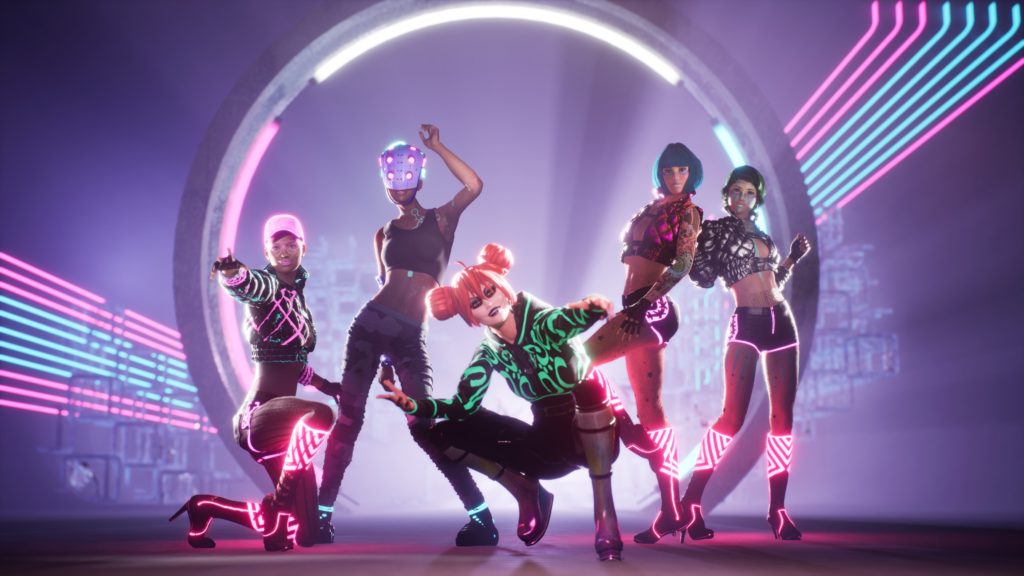DNABLOCK’s recent $7 million funding round announcement and its high-powered list of investors had caught more attention than the company’s plans to support creators and their communities. In fact, creators and communities using REPLIKANT as a tool for “massively collaborative creativity” is DNABLOCK’s focus, according to its Chief Strategy Officer, Scott Broock, with whom I spoke about what that investment will fund.
DNABLOCK‘s current effort is on projects with which it is already working. Over the course of the year, we should see its REPLIKANT avatar creation engine and its Los Angeles-based Creator Studio open for broader access. Throughout our discussion, Broock’s emphasis was on creators with strong communities who wish to co-create NFT collectibles, animate them, and tell their stories. In addition, he makes a strong case that community-owned creative content, from avatars to animated adventures, will win out over traditional corporate fare.
NFT IP Licensing Has Just Begun
Over the last year, an incredible amount of intellectual property and artistic content has been turned into NFTs. However, a growing move to license content first released as NFTs is becoming apparent. The open-ended rights afforded Bored Ape Yacht Club NFT owners have taken the lead in licensing opportunities for NFT holders. World of Women followed suit.
Along with Larva Labs, the team that created CryptoPunks, all three projects have signed with celebrity manager Guy Oseary for licensing and related opportunities. In addition, Bored Ape’s Yuga Labs just bought CryptoPunks and Meebits and will also extend its liberal rights policies to these NFT collections.
Early licensing efforts have been promising. But we can expect much more as communities take an increasingly decisive role in which NFT collections are widely embraced for long-term success. DNABLOCK is positioning its REPLIKANT 3d avatar creation engine as the ideal solution for creators who wish to deeply involve their communities in the creation, not just of avatars, but of the worlds in which they live and the stories that they tell.
As Broock says of REPLIKANT:
“Our tool is like Discord. It’s a tool for massively collaborative creativity. And it completely democratizes the act of creating three-dimensional imagery and stories, in real-time, built on game engine technology.”
And CEO Anthony Kelani states:
“The next great franchise isn’t going to come from the top-down, fully formed and with fixed narratives. It’s going to come from the bottom-up with stories that NFT communities write for themselves.”
DNABLOCK and ‘The Next Big Thing’
DNABLOCK’s $7 million funding round, announced March 1st, follows a $1.2 million round in September 2021. With a strong group of investors led by Sfermion, Solana Ventures, Animoca Brands, and Non-Fungible Labs, it’s big news for NFT Land, where avatars are already big business and the coming metaverse promises a virtual playground.
The appointment of Scott Broock, whose background includes stints at YouTube and Illumination, as Chief Strategy Officer was also announced. He joins co-founders CEO Anthony Kelani and CTO Luc Schurgers in what he describes as an irresistible opportunity:
“You get a couple of chances in your lifetime to be at the front of a new market. I’ve had that chance a couple of times now, and when I was least expecting it, here it is all over again. By God, it is as exciting as the first days I remember of VR. “
“There was never doubt that this was going to be the next big thing, and jumping on board as the CSO was exactly the dream of a lifetime.”
Demo of the REPLIKANT Avatar Creation Engine
The key to the REPLIKANT approach is that designs aren’t imported. Instead, Broock describes the avatar engine as “just code” which “works on procedural animation.”
He elaborates:
“We have a system that allows you to build avatars and animations procedurally [from code] which we believe is the correct way to build. When people talk about the metaverse, your ability to take your code and transfer it from world to world is much more possible [than with most current 3d avatars].”
It’s also a no-code solution:
“Our tool allows people in real-time to create a very compelling avatar based on their vision of what their character looks like. And with that same tool, they can tell stories in real-time.”
“It’s a drag and drop interface that is very familiar. If you’re someone who uses After Effects or Premiere or Photoshop or Final Cut, this thing looks like second nature.”
In addition, REPLIKANT provides “real-time animation tools that require no prior knowledge of 3D programming” as well as “partner templates for music videos, cinematics and interactive experiences.”
Communities Over Corporations
Broock acknowledged that many people might be attracted to such tools, not for community-led creations, but for more corporate projects seeking to create and animate avatars. However, he maintains that such efforts are doomed to failure:
“They’re all chasing the wrong thing, man. Here’s the thing, legacy media and Web 2.0 is centralized. It’s about owning information. It’s about segmenting the population, understanding the details, and owning that. That business is not going away.”
“But it is most assuredly the old medium and this new medium we’re discussing is participatory. It’s collaborative and it’s communal at its core. And, most importantly, the intellectual property is not centrally owned. It’s decentralized, communally owned, and people are encouraged to make derivatives of it to grow the intellectual property pie. It just makes more people interested and brings more people in.”
Supporting Creators and Their Communities
In the coming months, DNABLOCK will be working with a select group of creators and communities. As they share content, folks will have a chance to see examples of what can be produced beyond the still images and videos on the DNABLOCK homepage.
Over the course of the year, both REPLIKANT and DNABLOCK’s LA-based creator studio will be opened to a broader range of creators.
Broock suggested keeping an eye on the DNABLOCK website and following DNABLOCK on Twitter and Instagram for those interested in potential involvement.
Closing
While DNABLOCK will face many challenges, REPLIKANT’s combination of design and community creation tools makes it an especially appropriate fit for NFT collection creation and animation. It is also a great fit for creators seeking to empower their communities for co-creation. Whether such tools, built on Web3 values, will win out over Web2 approaches, may well be one of the biggest questions of the day.



